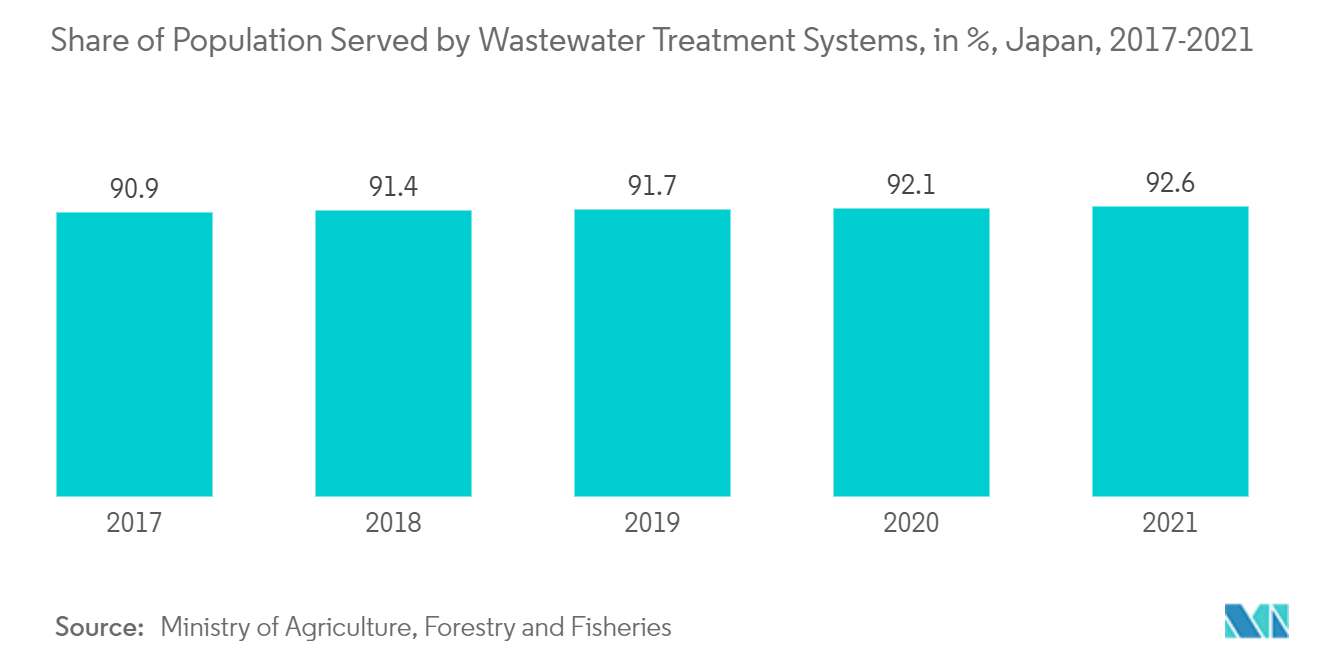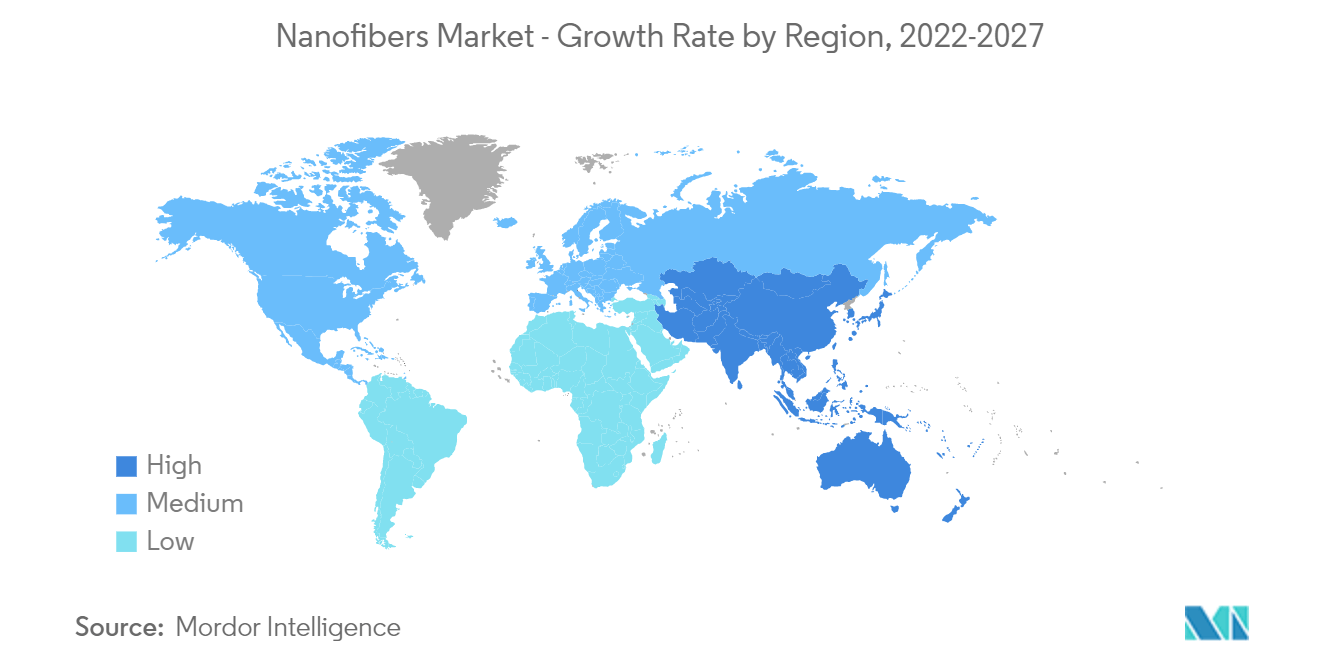Market Trends of Nanofiber Industry
This section covers the major market trends shaping the Nanofiber Market according to our research experts:
Water and Filtration Segment to Dominate the Market Demand
- Electrospun nanofiber-based filter media possess a high ratio of surface/volume, low-pressure drop, good interconnectivity of voids, and controllable connectivity and morphology, rendering them desirable for excellent filtering. Owing to these factors, nanofibers are used in high-efficiency particulate air (HEPA) filters.
- HEPA filters are used in industrial applications for keeping a designated environment free of particulate contaminants, such as a clean room. In most countries, HEPA filters need to meet stringent requirements.
- The US Department of Energy (DOE) standards state that a HEPA filter needs to remove at least 99.97% of airborne particles, which are 0.3 µm in diameter, among other requirements.
- The European standard has different classes of HEPA with specific requirements. The electrospun filter membrane is known for its high filtration efficiency and performance, which makes it potentially suitable for HEPA filters.
- In the recent past, nanofibers synthesized from metal oxide semiconductors are being actively explored in numerous chemical and gas sensing applications, including in the detection of air quality, the inspection of toxic and inflammable gases, and the monitoring of the environment. These nanofibers are capable of detecting various reducing and oxidizing gases in a short period.
- While the typical N95 masks are made using polypropylene fibers, several startups have been making face masks using electrospun nanofibers post the COVID-19 pandemic. Masks made using nanofibers capture aerosol droplets better while providing additional breathability.
- Nanofibers are also used in the water treatment sector as the scaffold for TFC (thin-film composite) membranes in the pressure and osmotic membrane processes. Additionally, they are also used in the thermally-driven MD (membrane distillation) process for water treatment.
- The growing water treatment industry in many countries including China, the United States, Kuwait, and Saudi Arabia is likely to propel the demand for nanofibers. According to the General Authority of Statistics, Saudi Arabia deployed 133 wastewater treatment plants in 2021, up 14.66 percent year-on-year. Nearly 419 million cubic meters of treated water were reused in 2021, an increase of 23.60 percent compared to 2020.
- Additionally, in March 2022, Saudi Arabia announced over 60 water projects, worth SR 35 billion (USD 9.33 billion), that will secure the country's position as the world's largest water desalination market. Saudi Arabia has been increasing its investment in clean energy, power, and water.
- In Japan, the usage of treated wastewater is also increasing day-by-day, In 2021, approximately 92.6 percent of the Japanese population was served by wastewater treatment systems, up from 92.1 in 2020.
- Hence, all such market trends are expected to drive nanofibers' demand in water and filtration applications during the forecast period.

Asia-Pacific Region to Dominate the Market
- Asia-Pacific dominates the global market share. The increasing demand from industries like healthcare, aerospace and defense, energy, and automotive has been driving the market's growth.
- The Chinese healthcare industry is the second-largest industry globally after the United States. China is expected to account for 25% of the global healthcare industry's revenue share by 2030. This is expected to increase the demand for nanofiber composites for drug delivery, tissue engineering, stem cell therapy, cancer therapy, and wound healing.
- Additionally, China has one of the largest wound dressing markets in the Asia-Pacific region, which is expected to register a CAGR of 6.7% over the next five years. China has many domestic and international wound management companies involved in wound dressings, such as Chinamed and Exciton Technologies. Most of them are located around the country's major cities, such as Shanghai and Guangzhou.
- The Chinese automotive industry is the largest in the world. According to the China Association of Automobile Manufacturers (CAAM), the automotive production stood at 2.59 million units in October 2022, up from 2.33 million units in October 2021.
- Healthcare has become one of India's largest industries. healthcare spending as a percentage of GDP is growing rapidly, owing to the government's focus on improving healthcare. India is also one of the most famous destinations for medical tourism due to its cheap and quality healthcare, and it has also been experiencing high growth.
- Additionally, the healthcare segment in India has also been growing and may boost the demand for the market studied in the country. The healthcare industry in the country is expected to reach USD 372 billion by 2022, mainly driven by increasing health awareness, access to insurance, rising income, and diseases. Additionally, The Indian government is planning to introduce a credit incentive programme worth Rs. 500 billion (USD 6.8 billion) to boost the country's healthcare infrastructure.
- Owing to these prevailing market trends, the Asia-Pacific region is expected to dominate the global market.


